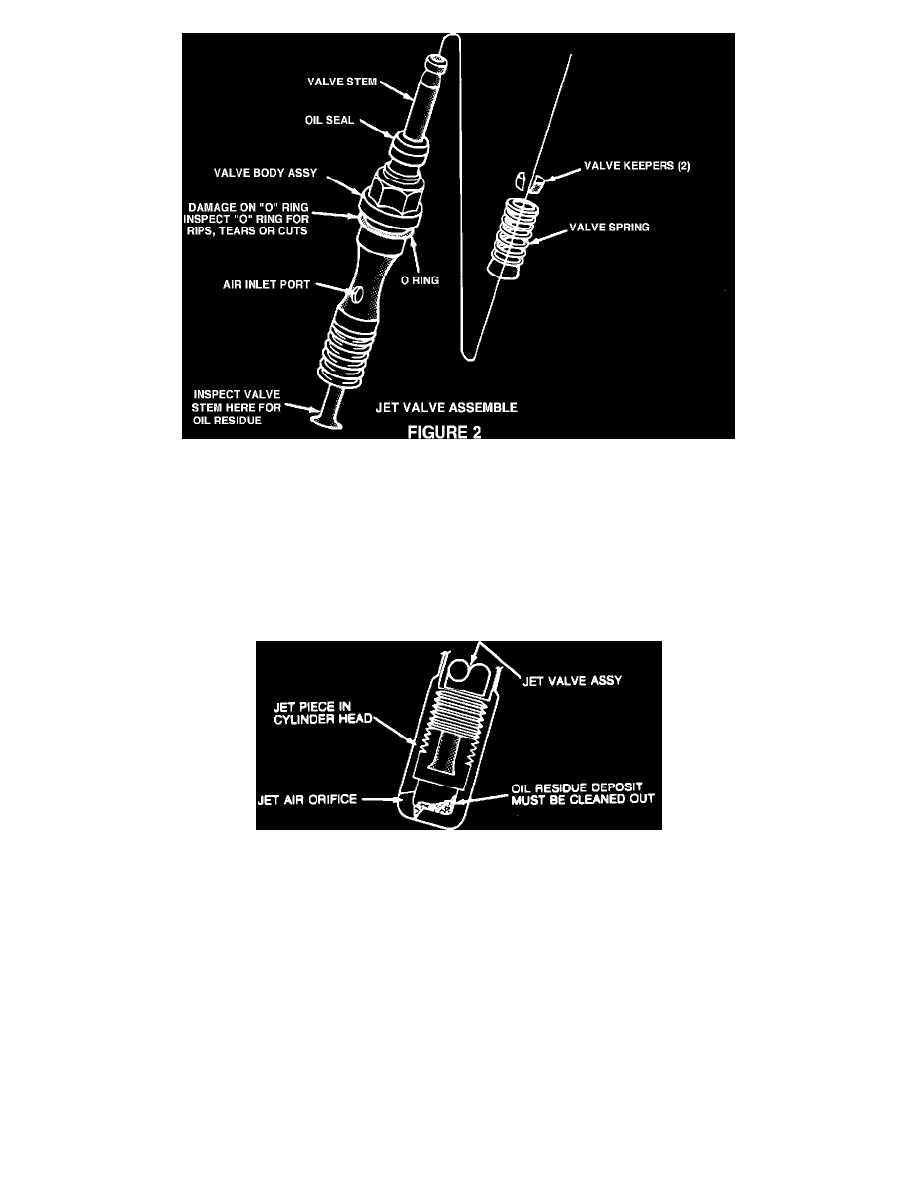Colt L4-1410cc 1.4L SOHC (1984)

FIGURE 2
2.
Push jet valve open and inspect the valve stem just under the valve head. If oil residue and excessive carbon buildup are present, the Jet Valve
Assembly, PN MD009440, will have to be replaced (Figure 2).
If no residue or carbon buildup is present, inspect the O-ring for rips, tears, or deformity. O-ring can be replaced separately with PN MD009786.
If no tear or deformity is found, remove the adjacent jet valves until the defective one is found. This is possible in some cases because oil from a
leaking jet valve will migrate through the jet air passage in the cylinder head, which will falsely indicate a cylinder with a good jet valve as being
bad.
FIGURE 3
3.
Inspect jet piece pocket by looking down into jet piece. If pocket has any buildup of burnt oil residue or carbon, it must be cleaned completely
using the following procedure (Figure 3).
a.
Remove spark plug.
b.
Place piston on top dead center of compression stroke (both valves closed).
c.
Use a thin stiff bristle brush to clean jet piece (a distributor cap terminal brush works well). A thin metal rod (coat hanger) can be used to
loosen heavy deposits.
d.
Direct compressed air in jet piece. The loosened deposits will be blown out of the jet piece and spark plug hole. Eye protection is
recommended when performing this operation.
e.
Reinspect cleaned jet piece. If cracking or erosion is seen in the area of the jet air orifice (Figure 3) or the deposit cannot be cleaned
adequately, the cylinder head will require replacement.
